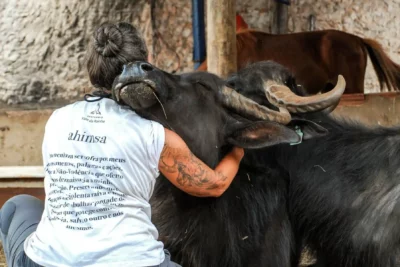A War Zone
In November 2021, the Environmental Police of São Paulo, Brazil, received a report of the abandonment of over one thousand buffaloes on a farm in Brotas, in the interior of the state. These animals, originally exploited for dairy production, experienced a new form of exploitation, of mistreatment and neglect.
The scene was heartbreaking. Animals buried in shallow graves, carcasses scattered, and others being eaten alive by vultures. Those still breathing were in agony from thirst, malnutrition, and complete abandonment, including pregnant animals and recently orphaned newborns. Buffaloes and calves without proper food resorted to eating tree bark to avoid starving. Many animals were already lying in the pasture, too weak to stand.
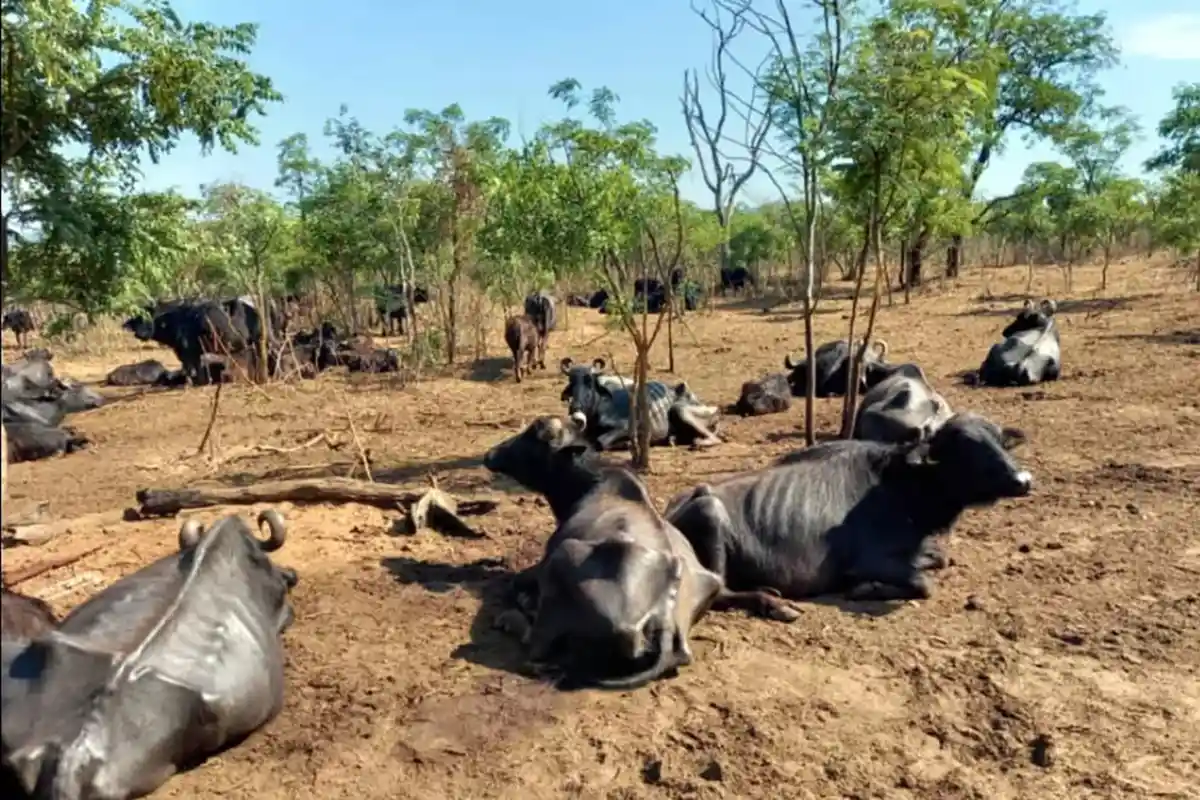
According to the expert report submitted to the Civil Police, it was concluded that the owners of the dairy farm continued to inseminate these animals, knowing the fragile and malnourished state of these beings. Beyond the hunger tormenting their stomachs and the thirst burning their mouths, these buffaloes were forced to give birth to more calves, and to produce more milk. Instead of feeding these animals, the farmer chose to feed his own pocket.
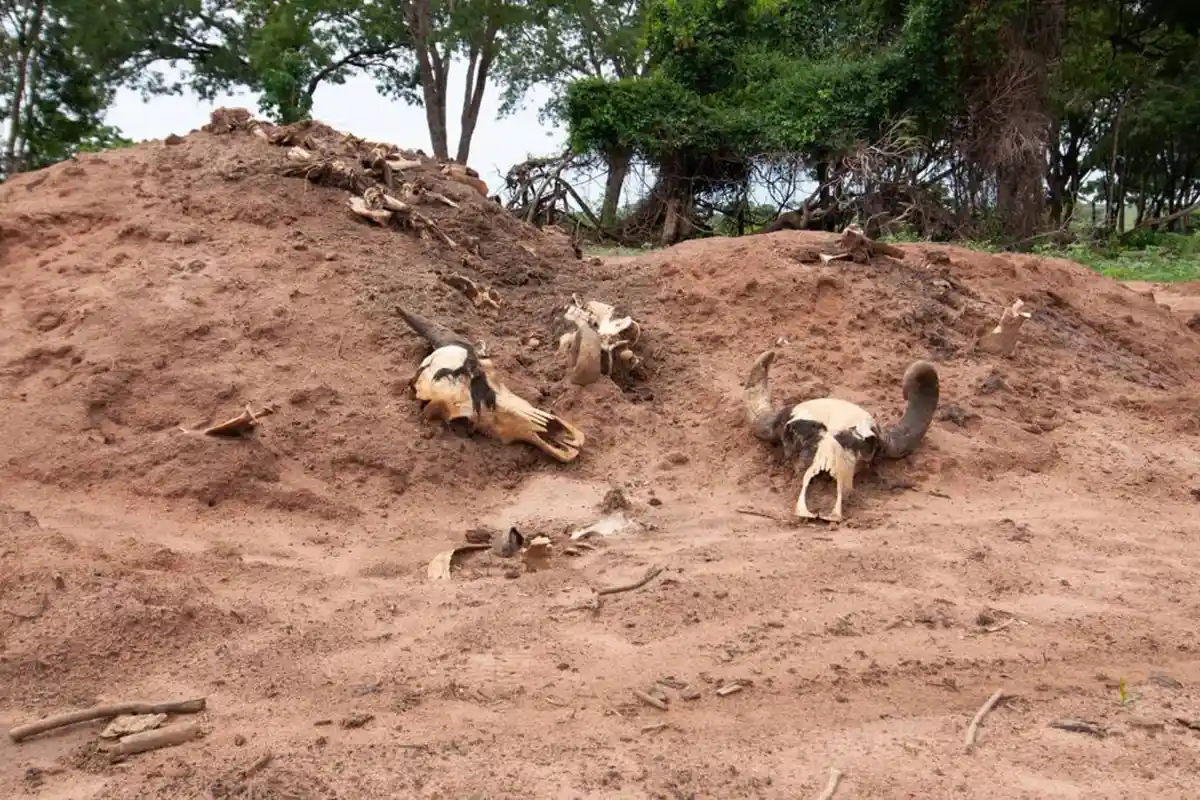
Behind The Violence
We can speculate as to why a farmer would let these animals die in complete abandonment, but the answer is simpler than it seems: profit. The cultivation of soy destined for farmed animal feed proved to be financially more enticing than maintaining buffalo exploitation for milk production.
According to the document accessed by EL PAÍS, pasture was abundant on the property. However, eager for the money to be made from the land, the farmer leased out parts of his vast farm, turning what was once pasture into cultivation fields, leaving the animals to their fate.
While soy grew and expanded on one side of the fence, on the other side, the buffaloes dwindled and died desperately one by one.
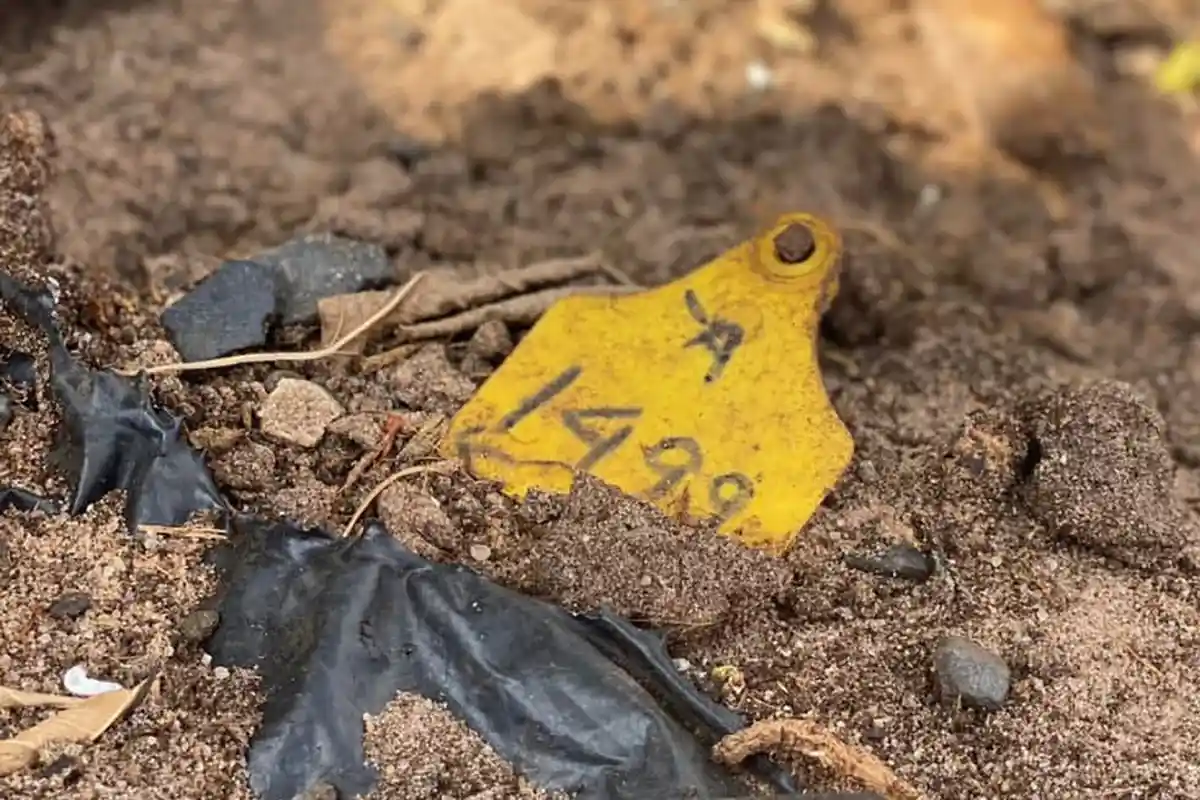
The Fight For Life
A massive mobilization was carried out by activists who attended to these animals, gaining national prominence as “the case of the Buffaloes of Brotas.” With the authorization of the justice system, volunteers set up a field hospital to rescue the animals and provide water and food to expedite their recovery process. The unity of these people, hailing from various parts of Brazil, was of immense importance in the fight to save these lives and prevent their return to the hands of those who exploited them for milk. Those who couldn’t assist in veterinary treatment or care organized on social media to raise funds through raffles and donations.
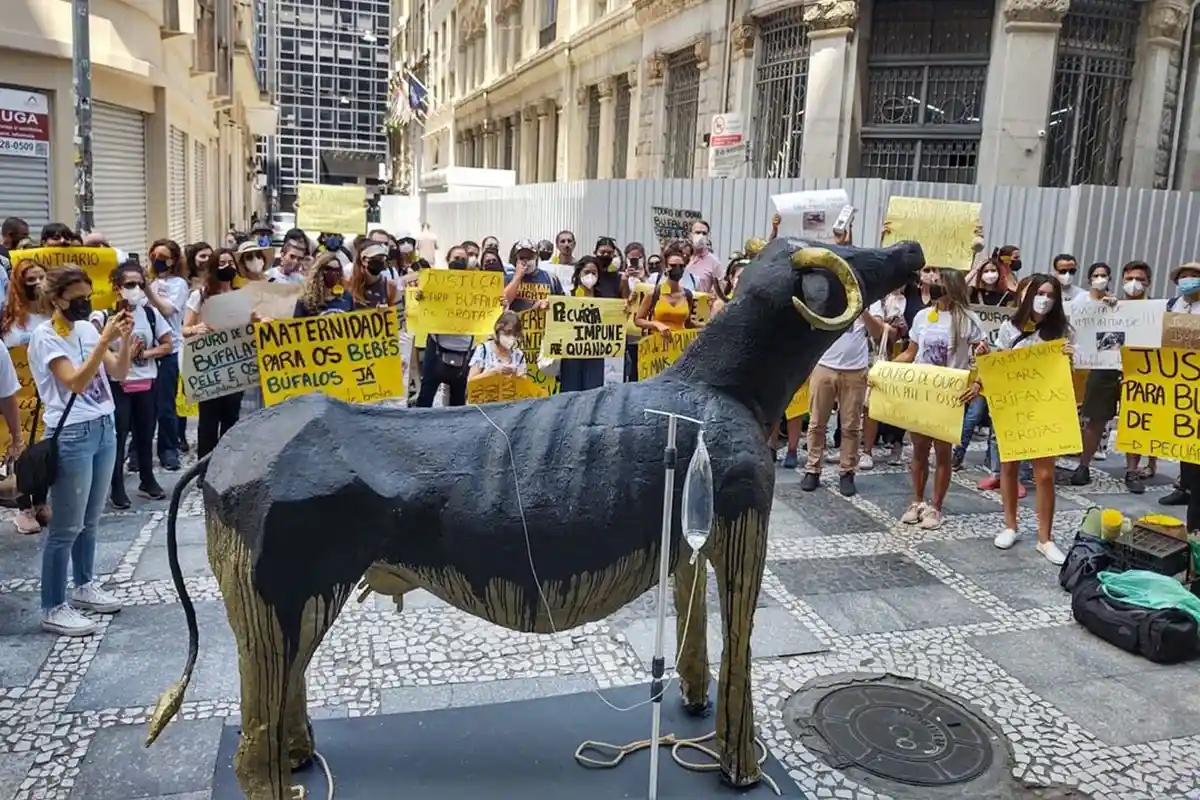
Even though the farmer opted for abandonment and these animals no longer had economic value, it didn’t stop him from going to court with the aim of continuing the suffering of these mothers and their calves. In November 2021, he obtained a court injunction that returned the custody of the buffaloes to his hands. The decision sparked reactions from influencers and big Brazilian celebrities, such as Luana Piovani, Luísa Mell, and Xuxa Meneghell, who protested through social media against the ruling. This support was crucial to keeping the case in the national media and mobilizing more activists and people sympathetic to the animal cause.
Society’s indignation and pressure to repair the damages caused to these animals kept the focus on the farm and the owner. After further complaints and investigations, the court confirmed the investigation by the Civil Police of Brotas (São Paulo) that the animals, after returning to the farmer’s hands, continued to be mistreated. By court order, the NGO Amor e Respeito Animal (ARA) was appointed as the custodian of the 1,000-plus buffaloes who were found in a state of abandonment, along with 72 equally mistreated horses.
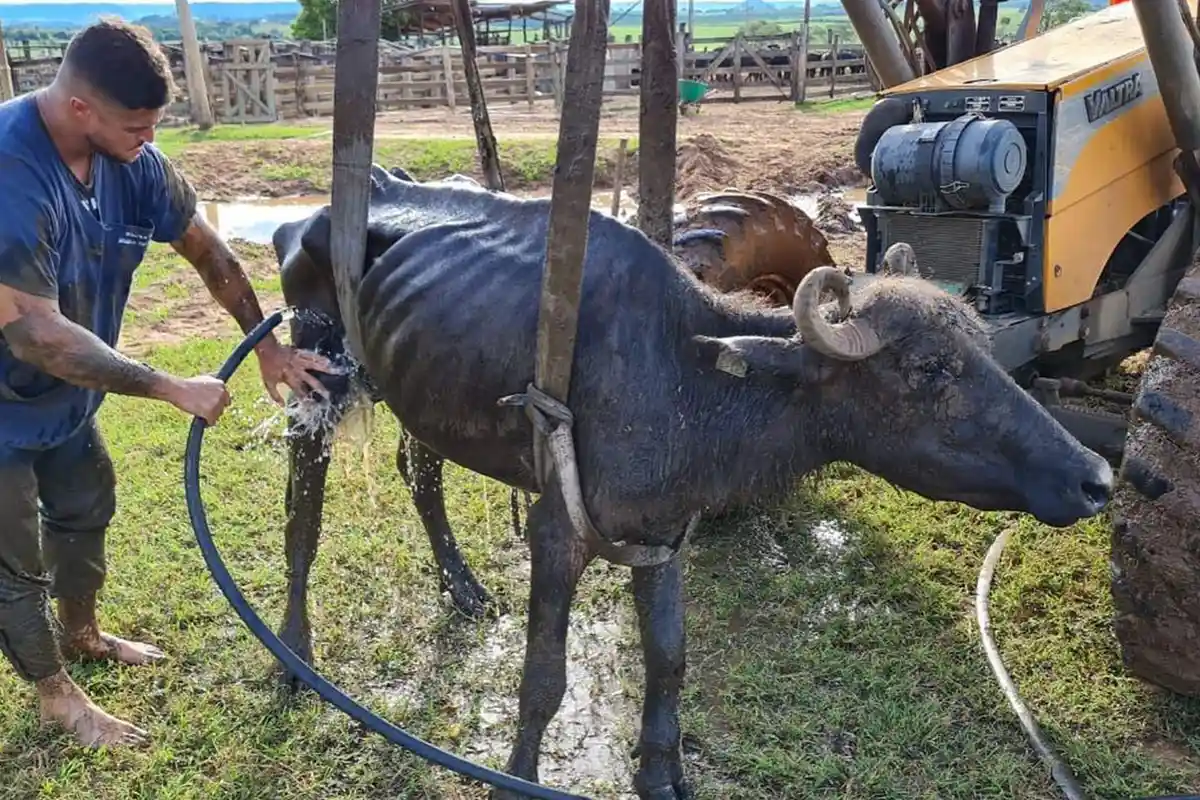
In an incredible symphony of solidarity, activists and society joined forces to save the surviving buffaloes of Brotas from the imminent threat of death. In this collective effort, we can see the transformative beauty of the bond between humans and animals, where compassion transcends barriers. Thanks to the support of celebrities, lawyers, volunteers, and anonymous individuals, the surviving buffaloes and their calves were rescued and remained under the custody of the ARA NGO until October 2023.
Racing Against Time
The case took a new turn on October 31, 2023, when the farmer and his family returned to court, and the São Paulo Court of Justice removed ARA from the role of custodian of the rescued buffaloes due to a lack of registration documents and a management plan for removing the animals from the farm.
In a statement, the NGO stated that “the management plan has always been a challenge, in addition to other difficulties created by third parties, such as constant destruction of the farm fences, reported to the authorities,” and explained that, in the last two years, the priority had been the complete recovery of the animals, making it impossible to remove them from the farm.
The court’s decision also returned the possession of the animals to the farmer’s family, who already had plans to send them to slaughter. With this dramatic sentence, activists and NGOs spared no effort to overturn the situation. Two weeks later, there was a new decision, this time more favorable to the wellbeing of the buffaloes. Two other institutions, the Santuário Vale da Rainha and the Santuário Rancho dos Gnomos, took over the responsibility for the animals.

Taking care of over a thousand animals would be a great challenge in itself, but there was still a complication. The judge in the case determined that the sanctuaries had 90 days to transport all the animals to another farm, otherwise, they would return to the farmer’s family. That left activists with a deadline of February 12 to carry out the transport and finally save the buffaloes.
In addition to covering the cost of reinforced feeding and veterinary care, including mandatory tests for their transfer, just the transportation cost exceeded R$200.000,00 (Approximately US$40,000.00). A complex, costly, and delicate operation, many would say nearly impossible. But, thanks to the tireless work of volunteers, donors, and those acting for the life and freedom of these beings, the transport was successful.
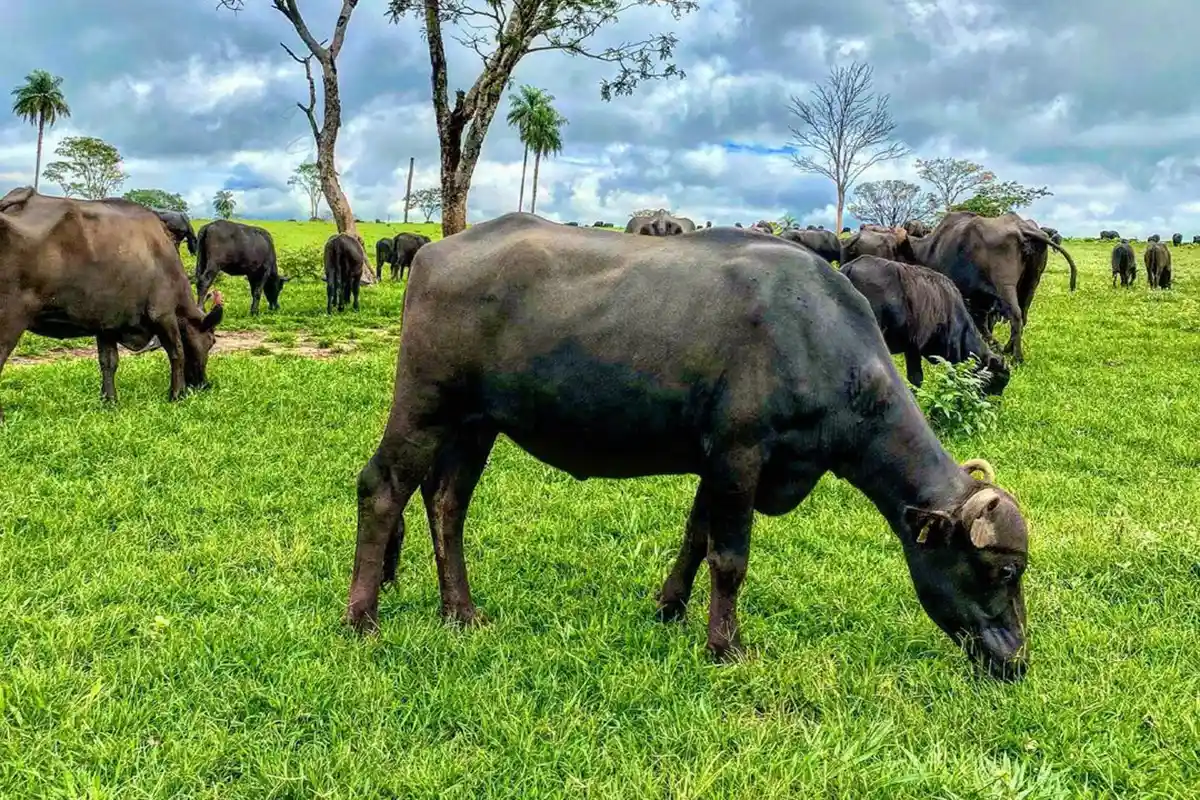
The Buffalo Dairy Industry
Despite the case of the Buffaloes of Brotas appearing to be an exception, abuse and exploitation are common, and like all farmed animals, these beings are turned into machines. Buffaloes are native to Asia, but exploitation for products like meat, milk, and cheese has meant these animals are farmed worldwide. In Brazil, farmers mainly exploit these animals for their milk, which is used to produce buffalo mozzarella.
Although the buffalo dairy industry is not as common as the cow dairy industry, the exploitation is very similar. Like cows, buffaloes do not produce milk constantly. To achieve this, they are forcibly impregnated to ensure almost constant milk production throughout their lives. Upon giving birth, the calves are separated from their mothers so that their milk can be used for human consumption. After a life of exploitation, when their production declines, the destination is the slaughterhouse.
It is common to see packaging showing happy animals on labels, but this does not reflect the reality of how the product is made. So, what really happens to put that cheese, milk carton, or yogurt on the shelf? Do cows, buffaloes, and goats live well and happily, or are they mothers spending their lives giving birth just to have their milk taken away and sold?
This Is Only The Beginning
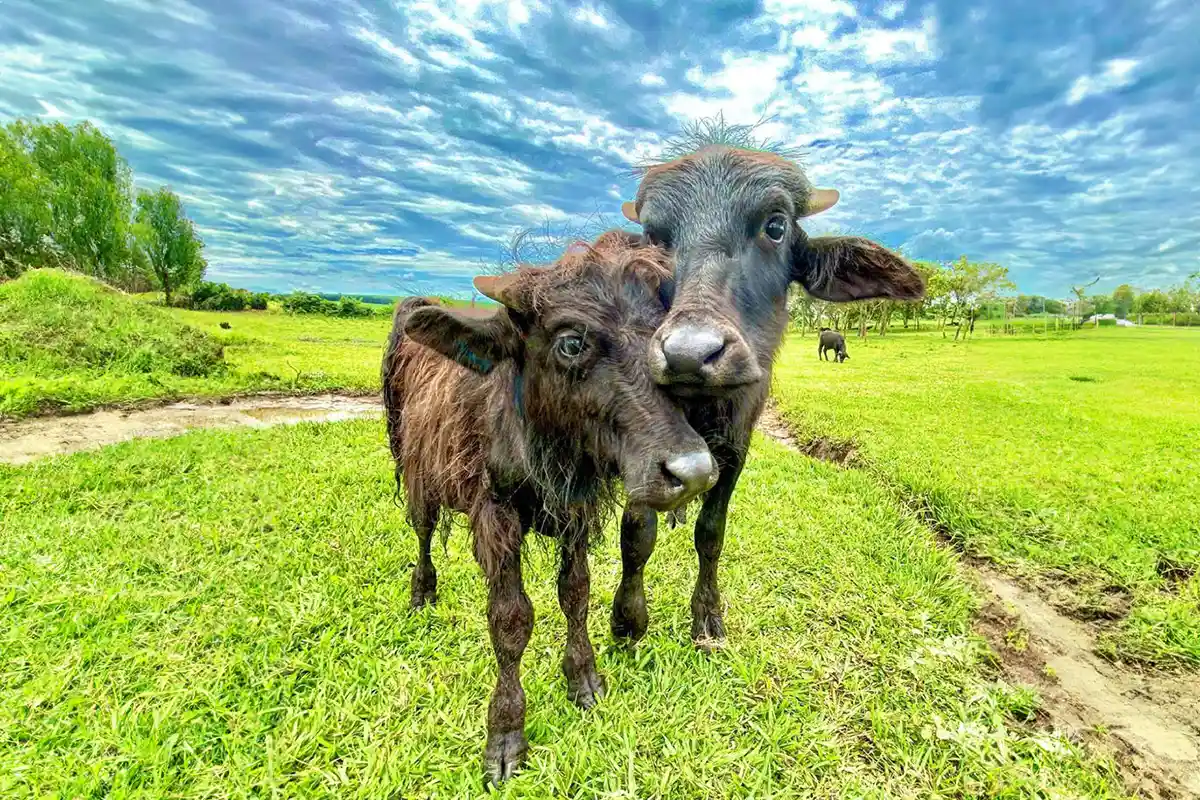
This rescue, like so many others that happen every year, shows that we are capable of positively transforming reality. May this not only be a milestone for animal protection but a milestone in our history as a society.
In the journey of the buffaloes’ struggle, each act of solidarity was akin to a beam of light, illuminating the path to the liberation of these mothers and their babies. By recognizing the shared pain between us and animals, we discover a universal truth: we are inhabitants of this planet, we feel, and we deserve compassion regardless of our species.
Together, we can build a world where all creatures live in freedom, love, and respect. Change starts with us—let us be the change we want to see in the world.
To learn more about the case of the “Buffaloes of Brotas”:
- Watch the short film “Órfãos do Leite” (Orphans of Milk).
English and Spanish subtitles available.
You can help
We invite you to take action for animals. Open your heart to reconnect with the other creatures who share this planet. Recognize the pain in the eyes of animals and let compassion guide your choices. As we have seen today, every small act of love creates waves of change. Let us be the voice, strength, and heart that animals need.
One thing you can do right now is to take part in one of Generation Vegan’s FREE vegan challenges. Whether you want to try veganism for the animals, the planet, humanity, your health, or even for spiritual reasons, we have a program for you. For every subscription, GenV will donate 1 dollar to the sanctuaries so, in addition to learning more about veganism, you will also help the Buffaloes of Brotas.
